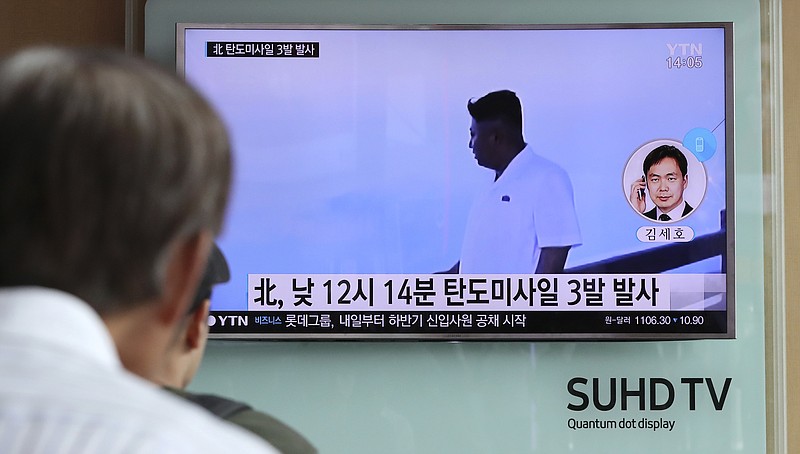SEOUL, South Korea (AP) - North Korea on Monday fired three suspected medium-range Rodong missiles that travelled about 1,000 kilometers (620 miles) and landed near Japan in an apparent show of force timed to the G-20 economic summit in China, Seoul officials said.
North Korea has staged a series of recent missile tests with increasing range, part of a program that aims to eventually build long-range nuclear missiles capable of striking the U.S. mainland.
Such tests are fairly common when international attention is turned to Northeast Asia, and this one comes as world leaders are gathering for the G-20 summit of advanced and emerging economies in the city of Hangzhou in eastern China. Beijing is the North's only major ally, but ties between the neighbors have frayed amid a string of nuclear and missile tests and what many outsiders see as other provocations in recent years.
South Korea's Joint Chiefs of Staff said that the three missiles, all believed to be Rodongs, were launched from the western North Korean town of Hwangju and flew across the country before splashing in the sea.
A Joint Chiefs of Staff statement described the launches as an "armed protest" meant to demonstrate North Korea's military capability on the occasion of the G-20 summit and days before the North Korean government's 68th anniversary.
In early August, another Rodong missile fired by North Korea also travelled about 1,000 kilometers, the longest-ever flight distance by that missile.
Japan's Kyodo news agency said all three missiles Monday fell in Japan's exclusive economic zone in the Sea of Japan, which the Koreas call the East Sea.
Japan's Foreign Ministry says Prime Minister Shinzo Abe approached South Korean President Park Gewn-hye during a coffee break at the G-20 and agreed to cooperate closely.
The White House said the United States was closely monitoring what it described as the latest provocation by North Korea. President Barack Obama was in China meeting with the leaders of France and Germany around the time of the launch.
Before Monday's launch, on the sidelines of the G-20 summit, Park criticized the North for what she called provocations that are hurting Seoul-Beijing ties.
The latest firing won't help the push by Chinese President Xi Jinping to get Park to scrap the planned deployment of a powerful U.S. anti-missile system in the South.
During a bilateral meeting on Monday's final day of the G-20, Xi warned Park that "mishandling the issue is not conducive to strategic stability in the region, and could intensify disputes."
China says the U.S. Terminal High Altitude Area Defense, or THAAD, system is meant to spy on China, while Seoul and Washington say the system is intended solely to defend against North Korea's missile threat.
The launch also comes days after South Korean and U.S. troops ended annual joint summertime military drills, which North Korea regularly describes as a dress rehearsal for invasion.
Last month, worries about the North's weapons programs deepened after a missile from a North Korean submarine flew about 500 kilometers (310 miles), the longest distance achieved by the North for such a weapon. In June, after a string of failures, North Korea sent an intermediate Musudan missile more than 1,400 kilometers (870 miles) high in a test launch that outside analysts said showed progress in efforts to acquire the ability to strike U.S. forces in the region.
The U.N. Security Council in late August strongly condemned four North Korean ballistic missile launches in July and August. It called them "grave violations" of a ban on all ballistic missile activity.
___
AP writers Mari Yamaguchi in Tokyo and Josh Lederman in Hangzhou, China, contributed to this report.
